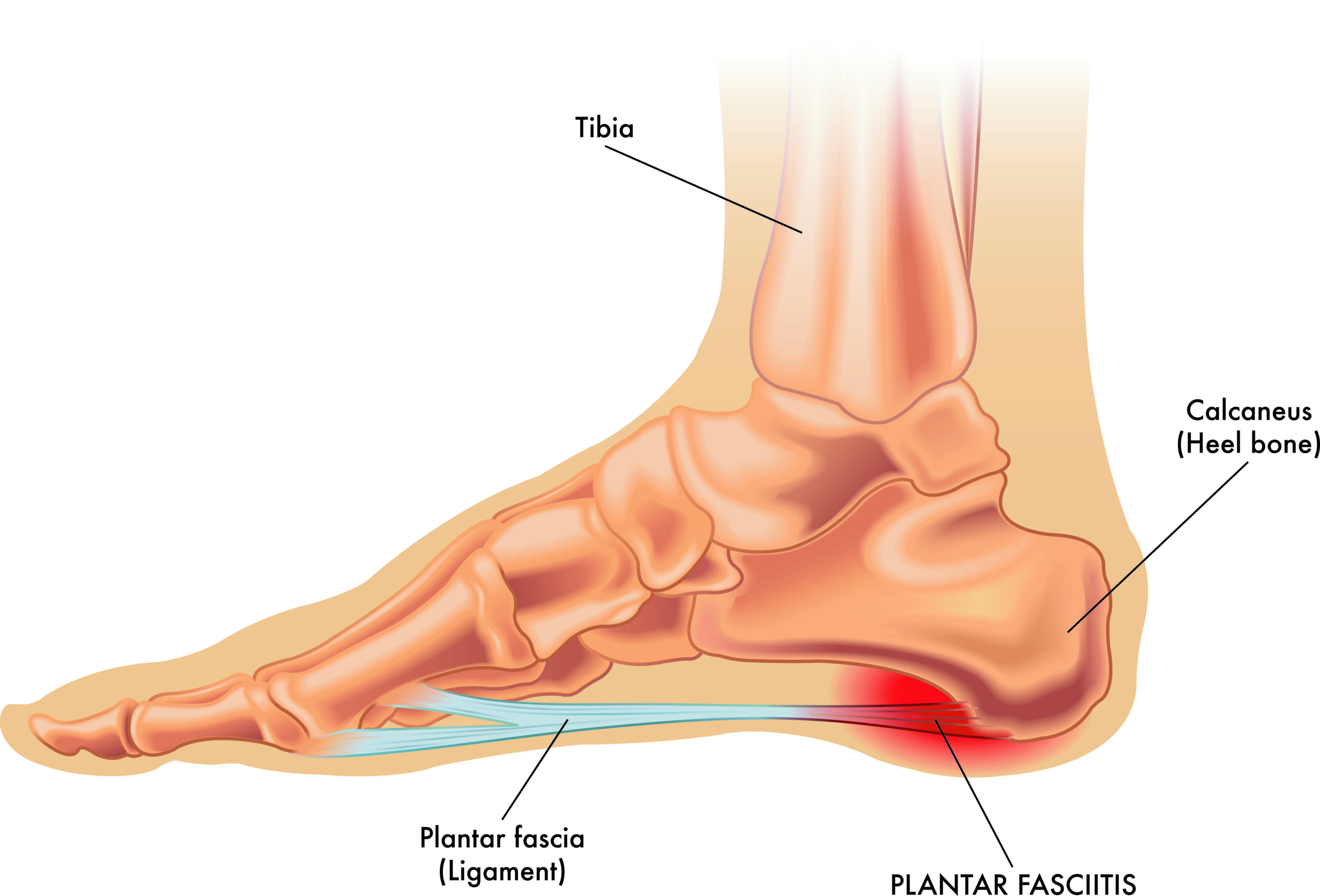
Plantar Heel Pain (Plantar Fasciitis) and Physiotherapy Treatment
Plantar heel pain, more commonly known as plantar fasciitis, is a debilitating condition affecting the bottom of the heel. This heel pain can have a significant impact to your overall quality of life as it affects you ability to walk and move around.
This blog post will discuss the causes, symptoms, and physiotherapy treatments for plantar heel pain.
Factors Contributing to Plantar Heel Pain
Usually plantar heel pain develops over time as a result of an increase in workload through the tissues and structures in your foot and ankle complex. For most people, this is usually when they start to introduce a new form of exercise such as daily walking or running.
Although the biggest factor is the change in load, there are several factors that can increase your risk of developing plantar heel pain.
Overuse: Excessive strain on the plantar fascia that your body is not accustomed to, from activities such as running, walking, or standing for long periods, can lead to heel pain. That’s why we recommend slowly transitioning into any new activity that you attempt.
Foot Structure: Flat feet, high arches, or abnormal walking patterns can change your biomechanics when you’re walking or running, leading to an increased risk of developing plantar heel pain.
Footwear: A change in footwear changes the biomechanics of your foot and ankle when walking, standing or running. Sometimes even if you keep your load the same, a change in footwear can trigger the onset of plantar heel pain. We generally recommend just wearing shoes that YOU find comfortable.
Obesity: Unsurprisingly, excess body weight can put additional stress on the plantar fascia.
Age: Unfortunately, this is irreversible. However, plantar heel pain is most common in women between the ages of 40 and 60.
Occupational Hazards: Jobs that require prolonged standing or walking on hard surfaces can increase the risk, especially if you’re new to the job or have taken a long time off work.
Symptoms of Plantar Heel Pain
The primary symptom of plantar heel pain is a sharp, stabbing pain or a dull ache in the bottom of the foot, at the heel. This pain is often most severe with the first steps in the morning or after long periods of inactivity.
Other symptoms may include:
– Pain that worsens after prolonged standing or walking.
– Stiffness and limited range of motion in the foot.
– Swelling or tenderness in the heel area.
Diagnosing Plantar Heel Pain
Diagnosis typically involves a physical examination and a review of the patient’s medical history. In most cases, there is no need to get any imaging tests such as x-rays or ultrasounds to diagnose plantar heel pain.
You physio will assess any tenderness at your heel, your mobility, strength and power to identify why you’ve developed this pain and how to best treat it.
Physiotherapy Treatment for Plantar Heel Pain
Physiotherapy is a highly effective treatment for plantar heel pain. A physiotherapist can design a personalized treatment plan to alleviate pain, promote healing, and prevent recurrence. Key components of physiotherapy for plantar heel pain include:
1. Stretching Exercises
Stretching the plantar fascia and calf muscles can help reduce tension and improve flexibility and mobility. Sometimes keeping your foot and ankle in a prolonged stretch into dorsiflexion (foot pointing up) when you sleep can help reduce your overall pain, especially in the mornings.
2. Strengthening Exercises
Strengthening the muscles around the foot and ankle can provide better support for the arch and reduce strain on the plantar fascia. Usually you develop plantar heel pain as a result of your body not being able to handle the external load and capacity. Therefore, strengthening the tissues around the foot and ankle can help your heel pain. Strengthening the muscles in the whole lower limb can also help support you when you walk and run.
3. Manual Therapy
Manual therapy techniques, such as massage and mobilisations, can assist with short-term pain relief.
4. Education and Activity Modification
Educating patients about the causes and management of plantar heel pain is crucial. You can perform all the exercises you want, however, if you keep aggravating your pain and not managing your load, your pain won’t improve. Your physio can assist with telling you what exercises or activities are safe and which ones to avoid for the time being.
Conclusion
Plantar heel pain is a common condition that can significantly impact an individual’s quality of life.
Physiotherapy offers a comprehensive and effective approach to managing and treating this condition through stretching and strengthening exercises, manual therapy, activity modification and education. Through addressing the underlying causes physiotherapy can help alleviate pain, promote healing, and prevent recurrence, allowing individuals to return to their daily activities pain-free.
If you are experiencing plantar heel pain, consult with a physiotherapist to develop a personalized treatment plan tailored to your specific needs.
Contact us now to book an appointment with one of our expert physiotherapists.
Get Out of Pain & Let Us Help You Regain Your Strength!
